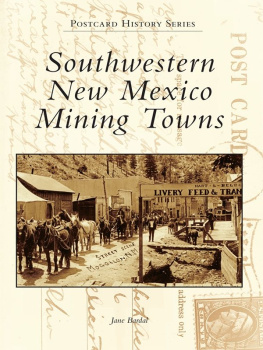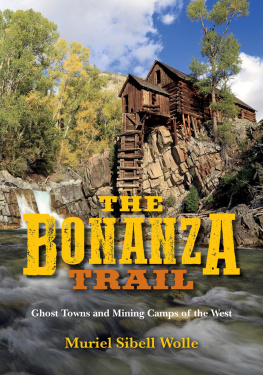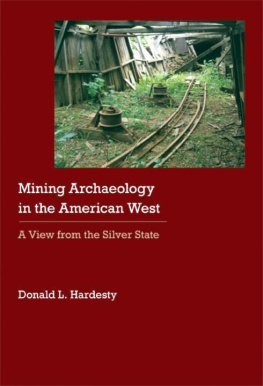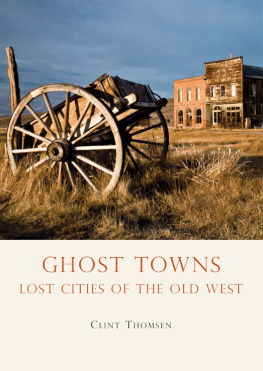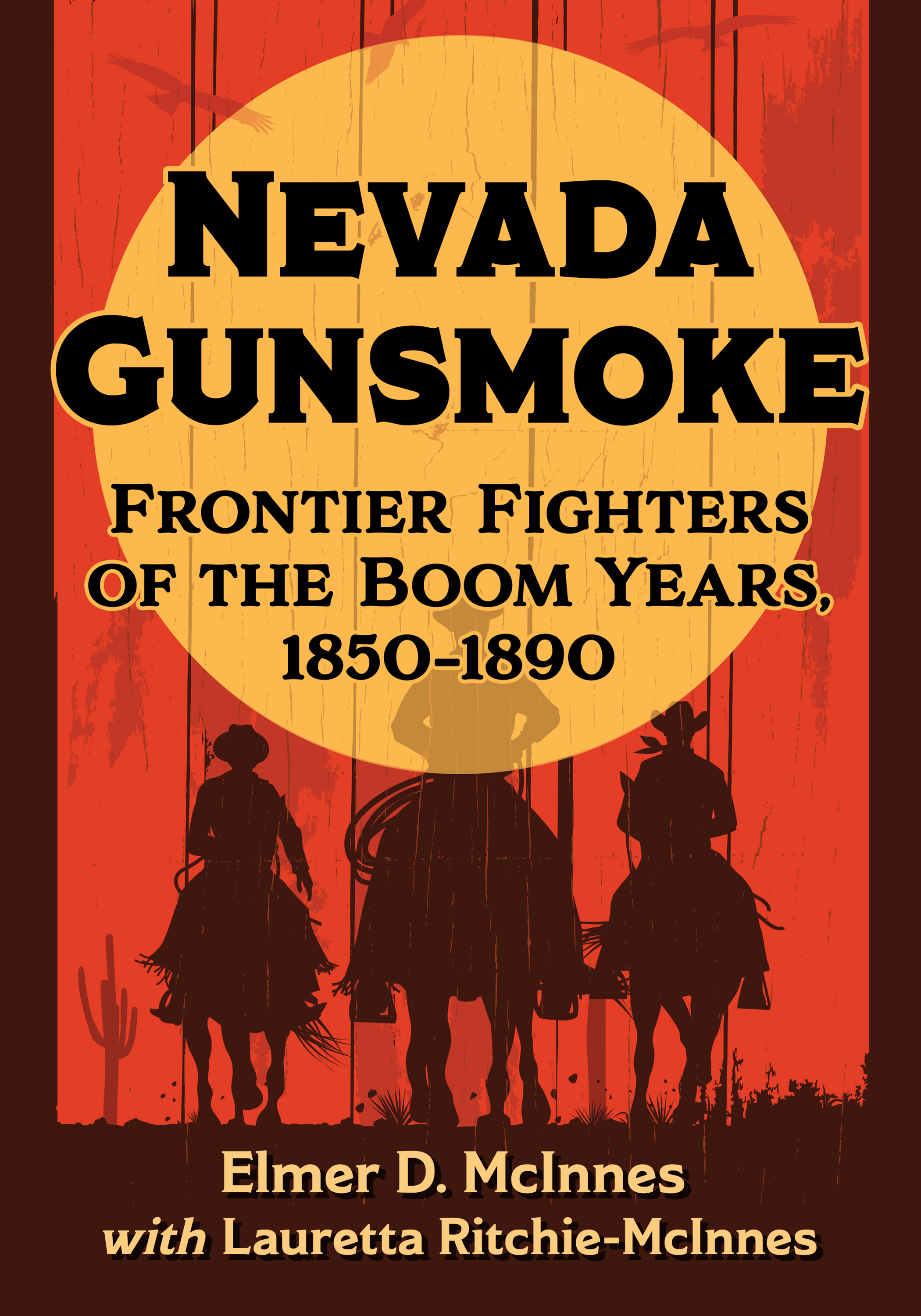Nevada Gunsmoke
Nevada Gunsmoke
Frontier Fighters of the Boom Years, 18501890
Elmer D. McInnes with Lauretta Ritchie-McInnes

McFarland & Company, Inc., Publishers
Jefferson, North Carolina
Library of Congress Cataloguing-in-Publication Data
Names: McInnes, Elmer D., 1958 author. | Ritchie-McInnes, Lauretta, 1967 author.
Title: Nevada gunsmoke : frontier fighters of the boom years, 18501890 / Elmer D. McInnes, with Lauretta Ritchie-McInnes.
Description: Jefferson, North Carolina : McFarland & Company, Inc., Publishers, 2022
Includes bibliographical references and index.
Identifiers: LCCN 2021059322 | ISBN 9781476686318 (paperback : acid free paper)
ISBN 9781476644080 (ebook)
Subjects: LCSH: PioneersNevadaBiography. | GunfightersNevadaBiography. | Mining campsNevadaBiography. | Frontier and pioneer lifeNevada. | BISAC: HISTORY / United States / State & Local / West (AK, CA, CO, HI, ID, MT, NV, UT, WY) | HISTORY / United States / 19th Century
Classification: LCC F840 .M45 2022 | DDC 979.3/01dc23/eng/20211209
LC record available at https://lccn.loc.gov/2021059322
British Library cataloguing data are available
ISBN (print) 978-1-4766-8631-8
ISBN (ebook) 978-1-4766-4408-0
2022 Elmer D. McInnes and Lauretta Ritchie-McInnes. All rights reserved
No part of this book may be reproduced or transmitted in any form or by any means, electronic or mechanical, including photocopying or recording, or by any information storage and retrieval system, without permission in writing from the publisher.
Front cover images 2022 Shutterstock
Printed in the United States of America
McFarland & Company, Inc., Publishers
Box 611, Jefferson, North Carolina 28640
www.mcfarlandpub.com
Acknowledgments
by Elmer D. McInnes
As is usually the case with a project such as this, it cannot be accomplished alone. Numerous individuals and institutions have contributed to the compilation of the book now before you. I would like to acknowledge those contributions and thank all involved for their input in the assembling of this volume.
Nevada: Dianne Pickett and all other staff membersGetchell Library, University of Nevada, Reno; Nevada Historical Society, Reno; Chris DriggsNevada State Library and Archives, Carson City; Gayl SiemerWhite Pine County Library, Ely; Corinne Hogan, Lisa C. LloydLincoln County Clerks Office, Pioche; Mary Jo CastanedaEureka County Clerks Office, Eureka; C. BloomsburgFirst Judicial District Court, Carson City; Lander County Clerks Office, Battle Mountain; Lied Library, University of NevadaLas Vegas.
Other locations: CaliforniaAlfred W. Janske, Oakland; California State Archives, Sacramento; Truckee Library, Truckee; Charles Dyer and Isabel MacLean DrownCarlo M. De Ferrari Archives, Sonora; Robert ChandlerWells Fargo Bank History Museum, San Francisco; ColoradoMark R. Jones, Centennial. UtahJulie KroffThird District Court, Tooele; Fifth District Court, St. George; Fifth District Court, Cedar City; Susan ChristopherGerald R. Sherratt Library, Southern Utah University, Cedar City; David Yardley, Iron County Clerk, Parowan; Deborah M. JukesFifth District Court, Beaver. IllinoisCheryl BarnhartCircuit Court Clerks Office, Princeton. TexasChuck Parsons, Luling.
We also thank the many staff over the years at the Yorkton Public Library in Yorkton, Saskatchewan, Canada, for all their assistance in our research.
Last, but not least, I thank my wife Lauretta Ritchie-McInnes for all her love and support over the years. As not only wife but research assistant, manuscript reader, editor, typist, publisher liaison and idea consultant, Lauretta goes above and beyond the call of duty every day.
To anyone we inadvertently may have missed, please accept our humblest apologies but know your efforts toward this volume are greatly appreciated.
Table of Contents
Introduction
by Elmer D. McInnes
The mining rush to Nevada, ca. 18591878, though on a somewhat smaller scale than the mammoth California gold rush of ten years before, nonetheless witnessed a prodigious influx of ebullient humanity into the formerly barren, sunbaked landscape. The discovery of valuable silver deposits in the rock of the region proved to be the impetus for the human development of the nations 36th state. In imitation of California, however, who set the North American precedent, the Nevada rush also saw that unique development called the mining camp gunman or Chief of the camp. That violent, domineering individual, armed with a brace of huge so-called horse pistols and a wicked looking, long bladed Bowie knife, strode the plank sidewalks and dirt streets of many of the regions bustling communities. They would be a fixture for most of Nevadas boom years and would add their own brand of excitement to the days of auriferous wealth accumulation.
The first known white man to set foot in what would later become the State of Nevada proved to be a group of fur trappers led by the legendary mountain man Jedediah S. Smith out of St. Louis, Missouri, in 1825. Although only passing through on their way to California, Smith and his party were the first to describe various features of the landscape of the area. Smith was subsequently followed by various other exploring parties, including those of Peter S. Ogden, Milton Sublette and the great Pathfinder, John C. Frmont. These expeditions, plus the parties of gold seekers who crossed the Great Basin in the late 1840s on their way to California, helped to familiarize the rest of the country with the seemingly uninhabitable region.
With the establishment of Utah territory on September 9, 1850, the area now encompassing the present-day State of Nevada became part of the Territory of Utah. That same year a party of Salt Lake pioneers set out for California. Reaching the base of the Sierra Nevada Mountains in the Carson Valley, the group tarried long enough to discover slight traces of gold in the feeder streams of the Carson River. Although this created some interest it was not deemed of great importance and the area continued to be ignored as a place for settlement.
Though prospecting had been sporadic and largely unpromising, by 1851 the Carson Valley of the West portion of the territory began to attract settlement, principally at the camp of Mormon Station, later renamed Genoa. Slowly, more and more settlers and gold seekers began to arrive and other camps began to spring up throughout the Valley. Eventually, the officials of Utah Territory at Salt Lake City split the region of present-day Nevada into various counties, including the organization of Carson County in 1855. By this time the discovery which would cause this sparsely settled wilderness to explode in a paroxysm of greed, violence and heady adventure had already come to pass.
Despite the fact of the search for gold having been, to a great extent, disappointing, the quest for silver still had some promise. In 1853 the Grosh brothers of Pennsylvania, E. Allen and Hosea, discovered important silver deposits in the Carson Valley near the future site of the town of Silver City. At length the discoveries began to be announced at a steady pace, including possibly the biggest of all, the so-called Comstock Lode, on June 12, 1859. This would be the genesis of perhaps Nevadas greatest boomtown, Virginia City, as well as numerous others in the area. With the first influx of humanity from the California gold fields, the Nevada rush began in earnest.



